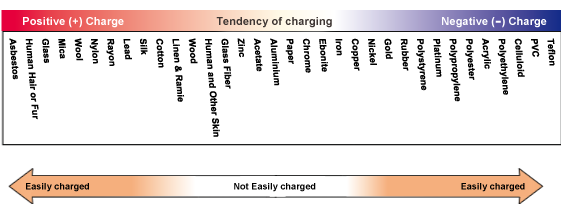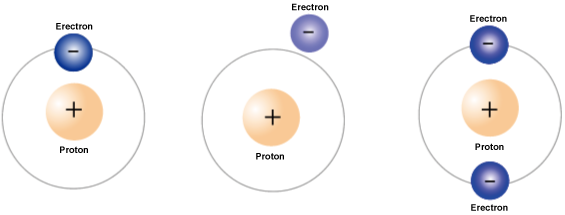What is static electricity?
Seen from the viewpoint of electricity, all objects are made up of arrays of plus and minus charges. This electrical array may lose its balance due, for example, to friction when movements occur. When an electrical polarity builds up in one area we say that it is “electrically charged.”
Depending on the objects rubbing against one another, friction causes static to occur either as a “positive charge” or a “negative charge.” This can be shown as a diagram known as triboeletric series.

How, then, does static electricity occur? Static electricity may occur through various mechanisms, but the main causes are friction and detachment. Let us look at the types of static electricity here.

- Charging by friction : A charge that arises due to objects rubbing against each other.
- Charging by separation : A charge that arises when objects that are in contact with each other are pulled apart.
- Charging by contact : A static charge that arises when materials of two different types come into contact with one another.
- Charging by flowing materials : A static charge that arises when transporting gases, liquids or powders through a pipe or when they push out of the pipe exit.
- Charging by induction : A static charge that arises from static induction when objects carrying an electrostatic charge approach each other.
The Scheme of Atoms and The Mechanism of Electrical charges occuring as electrons relocate

Stable ( Neutral )
The electrostatic balance collapses as the electron is pulled away.
causing a positive(+) charge.
If the electrostatic balance is disturbed and an elctron is added, a negative(-) charge will arise.

